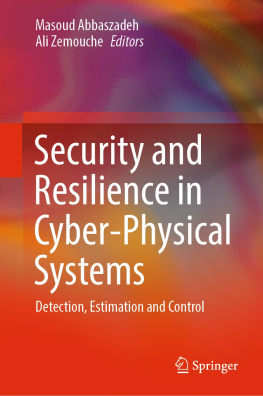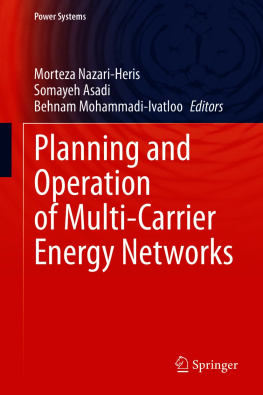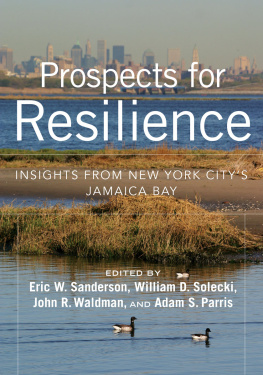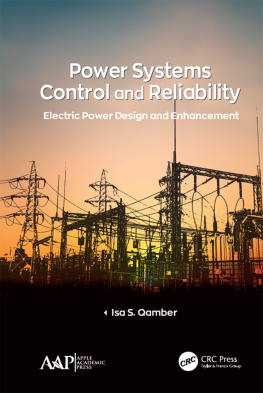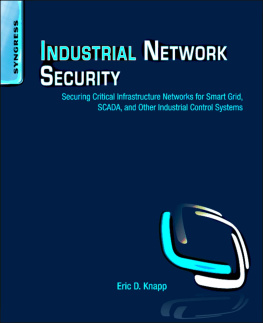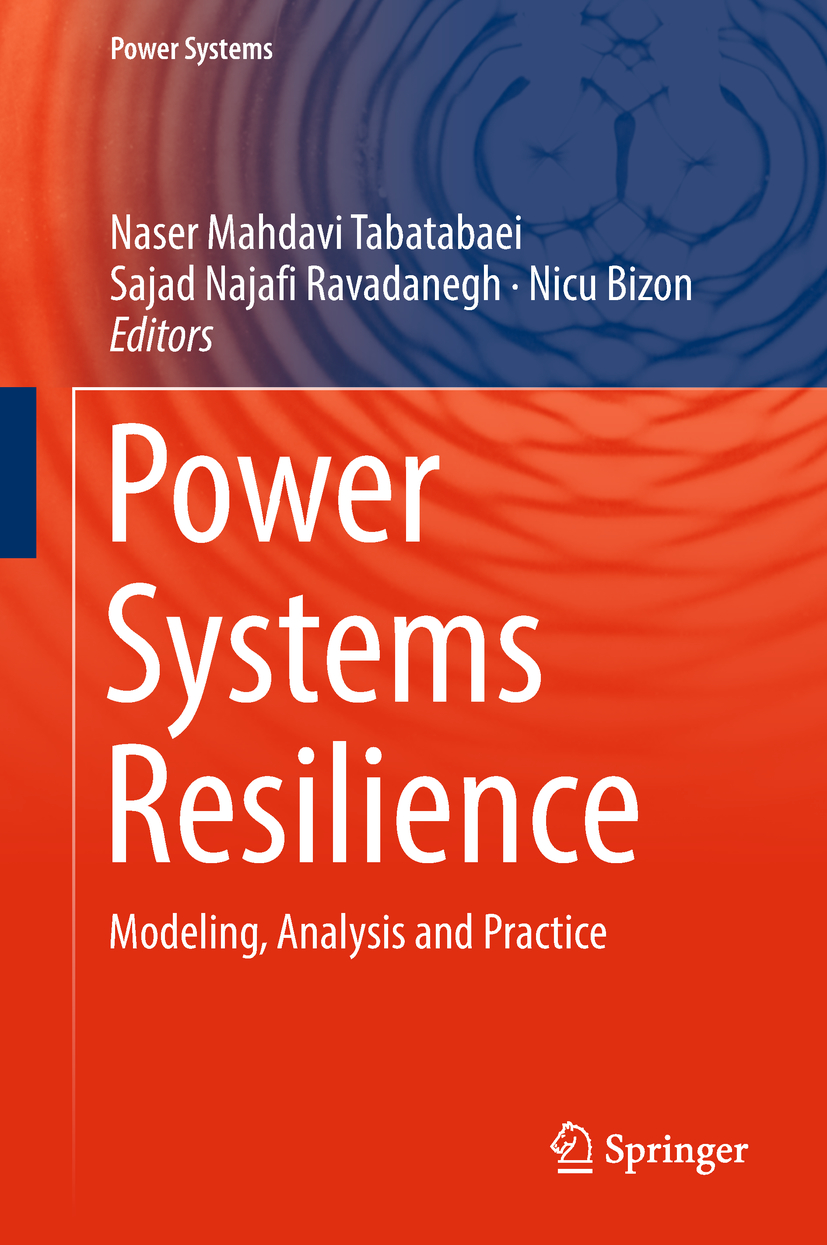Power Systems
More information about this series at http://www.springer.com/series/4622
Editors
Naser Mahdavi Tabatabaei , Sajad Najafi Ravadanegh and Nicu Bizon
Power Systems Resilience Modeling, Analysis and Practice
Editors
Naser Mahdavi Tabatabaei
Department of Electrical Engineering, Seraj Higher Education Institute, Tabriz, Iran
Sajad Najafi Ravadanegh
Department of Electrical Engineering, Azarbaijan Shahid Madani University, Tabriz, Iran
Nicu Bizon
Faculty of Electronics, Communications and Computers, University of Pitesti, Pitesti, Arges, Romania
ISSN 1612-1287 e-ISSN 1860-4676
Power Systems
ISBN 978-3-319-94441-8 e-ISBN 978-3-319-94442-5
https://doi.org/10.1007/978-3-319-94442-5
Library of Congress Control Number: 2018948612
Springer Nature Switzerland AG 2019
This work is subject to copyright. All rights are reserved by the Publisher, whether the whole or part of the material is concerned, specifically the rights of translation, reprinting, reuse of illustrations, recitation, broadcasting, reproduction on microfilms or in any other physical way, and transmission or information storage and retrieval, electronic adaptation, computer software, or by similar or dissimilar methodology now known or hereafter developed.
The use of general descriptive names, registered names, trademarks, service marks, etc. in this publication does not imply, even in the absence of a specific statement, that such names are exempt from the relevant protective laws and regulations and therefore free for general use.
The publisher, the authors and the editors are safe to assume that the advice and information in this book are believed to be true and accurate at the date of publication. Neither the publisher nor the authors or the editors give a warranty, express or implied, with respect to the material contained herein or for any errors or omissions that may have been made. The publisher remains neutral with regard to jurisdictional claims in published maps and institutional affiliations.
This Springer imprint is published by the registered company Springer Nature Switzerland AG
The registered company address is: Gewerbestrasse 11, 6330 Cham, Switzerland
Dedicated to
all our teachers and colleagues
who enabled us to write this book,
and our family and friends
for supporting us all along
Foreword
Power Systems Resilience has always been a major challenge for the scientists and the engineers. However, in the recent years, the increased public solicitude for the resiliency of power systems and the resilience enhancement of cyber-physical systems used here has powerful motivated activities of the research and development in this field. More than 18,000 technical articles written in last decade and stored in Science Direct Elsevier database have Power Systems Resilience in their title, abstract, or list of keywords. Other 2000 are already published in 2018, so this interest will grow exponentially in next years. There were less than 1450 until 2000.
The aim behind this enormous progress is quite simple: both scientific and industry are involved in resilience enhancement of cyber-physical systems used for securing the critical infrastructure networks such as power systems.
The book generally explains the fundamentals and contemporary materials in Power Systems Resilience. It will be very efficient for electrical engineers to have the book which containing important subjects in considering modeling, analysis, and practice related to Power Systems Resilience. The book comprises knowledge and theoretical and practical issues as well as up to date contents in these issues and methods for controlling the reliabilities against attacks and risks in AC power systems.
Some textbooks and monographs are previously presented for people want to learn more on Power Systems Resilience. The worth of the present book is that it tries to put forward some practical ways for impact analysis of risk events on power system operation, bringing together the topics such resiliency, smart grid or microgrids, and cybersecurity, which are now more and more organized. The editors wisely designated the topics to be preserved, and the chapters written by well-recognized experts in the field are placed in four sections.
The book introduces the reader to the modeling, analysis, and operation of resilience networks, and optimal operations of microgrids. Then, the main subjects related to planning, attacks, and recovery in resilience systems are presented and explained. The last section presents new research solutions for challenging issues appeared in last years. The book also includes informative case studies and many instances.
The book can be used in the classroom, to teach Power Systems Resilience courses to graduate students, and be suggested as further reading to undergraduate students in engineering sciences. It will also be a valuable information resource for the researchers and engineers concerned by Power Systems Resilience issues or involved in the development of cybersecurity applications.
Academician Arif M. Hashimov
Baku, Azerbaijan
May 2018
Preface
It is obvious that the electrical infrastructure, which is responsible for providing electricity to all other critical infrastructures, has an important place in the functioning and development of todays world, and this network is to be reliable and at the same time to operate safely. In last decade, the needs for electric energy and the technological developments have increased annually, but the fact that the raw or renewable energy sources cannot be actuated in the same way has made it necessary to optimize their use. The power plants are dispersed in different regions and the optimum operation of the energy systems could be ensured by interconnection of these grid networks. Consequently, different problems arise during the planning and operation of microgrids, and the use of new technologies has become compulsory in order to solve the emerging problems, including enhance of Power Systems Resilience.
Resiliency and cybersecurity are two essential issues for todays power systems, but especially for smart grid or microgrids implemented in many developed countries. In the progress of power system components, one of the key aspects is to enhance their resilience in order to become more safety face to actual complex cyberattacks. The planning and operation of distribution network infrastructures all over the world are based on reliability principles of security and sufficiency. These principles enable distribution network to operate safety against common threats and as a result provide high-quality supply with few interruptions for consumers. However, it is evident that more considerations beyond the classical reliability are required to keep the lights on. Disruptive events, whether man-made or based on natural causes, can lead to component failures, and then breaking down the entire power system. The origin of the resiliency is word resilio, which mean the ability of an object to return to its original state. Here, the ability of power system to recover quickly after such destructive events is called as power system resilience.




